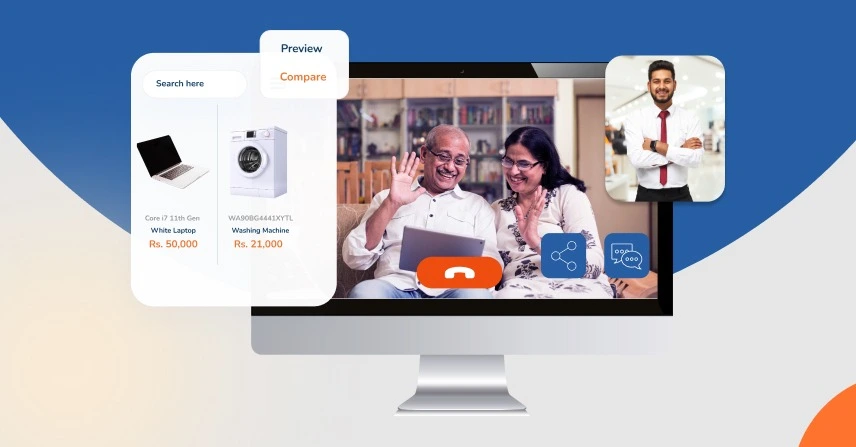The Age Of ‘Phygital’ – Embracing The Change From Tangibility To Interactivity. Business And Social Dynamics Are Changing Rapidly. The Future Is In How Business Can Blend Together Both Physical And Virtual Worlds To Create Seamless Customer Experience
The phygital experience economy has been propelled by rapidly evolving consumer behaviors and technological innovations. As digital natives raised on mobile devices and interactive technologies come to dominate key audience segments, their expectations for engaging, personalized and channel-agnostic experiences have disrupted traditional business models.
PwC’s survey found that a negative online experience can be a deal breaker for brand loyalty. More than half (51%) of consumers said they’d be less likely to stick with a brand if its online experience isn’t as enjoyable as shopping in person.
Forward-thinking brands across industries are responding by pioneering phygital strategies that merge the convenience and connectivity of digital with the tangibility and human elements of physical environments. Let’s explore how this paradigm shift is revolutionizing customer journeys.
Reimagining Retail with Phygital
Retail is the most enthusiastic about the phygital frontier. It uses immersive technologies, such as AR, VR, interactive displays and mobile apps, to combine online and in-store shopping experiences.
Using AR visualization
Customers can virtually place furniture pieces in their home to see realistic size, color and style. Smart mirrors let shoppers easily try on clothes digitally. Associates equipped with AR smart glasses provide live, personalized demos highlighting product features and benefits up close.
Automotive companies are revolutionizing the car-buying process using phygital tools. Dealerships deploy AR and VR configurators that allow people to customize vehicles’ exteriors, interiors and accessories digitally before finalizing options.
Virtual Try on
The phygital trend extends to categories like cosmetics, where customers sample makeup via AI-powered virtual try-on capabilities. Within home improvement stores, phygital apps let people visualize new flooring, countertops, or color palettes.
These phygital retail experiences address consumer demands for convenience, speed and meaningful engagement – blending the best of e-commerce browsing with physical touchpoints. Shoppers enjoy the freedom to research, build wishlists and make purchases online, while still accessing in-person assistance, product trials and hands-on demos.
Transforming Service Industries
Phygital integration is also transforming service sectors like healthcare, banking, hospitality and more by melding physical and digital customer journeys.
Healthcare
Leverage video telemedicine and remote patient monitoring to provide care and consulting outside traditional clinical settings. Patients can virtually access their physician from the comfort of home by smartphone, tablet, or laptop.
Simultaneously, that remote video visit maintains elements of the physical care experience, like personal dialogue and relationship. Doctors can verify medications or review imaging in real-time. Monitoring devices like wearables enable seamless health tracking between visits.
Banking and financial
Brands are harnessing phygital experiences as customers increasingly conduct transactions through mobile apps and websites. To maintain human advisory elements, institutions use interactive video chat for “face-to-face” consultations during processes like mortgage, investment or small business loan applications.
Meanwhile, intelligent chatbots and digital assistants provide instant 24/7 service for basic inquiries and requests, bridging the virtual and physical spheres. Within local branches, smart displays and touchscreens help people learn about products and account options in an exploratory, self-guided way.
Hospitality
Innovative hotel chains leverage phygital capabilities to craft memorable experiences from pre-arrival through checkout and beyond. Mobile apps enable digital check-in and act as a smarthub for accessing guestroom controls and amenities. AI concierges handle queries via voice or text messaging
While on the property, guests can take self-guided VR tours of facilities and nearby attractions from their rooms. Internet-connected amenities like room controls, smart TVs, and smart mirrors further blend the physical and digital hotel journey touchpoints.
Other industries undergoing phygital transformations include museums using AR/VR to bring exhibits to life with immersive storytelling, restaurants incorporating interactive AR menus and tableside ordering, and sports/entertainment merging in-venue experiences with second-screen streaming and mobile app engagement.
Key Benefits of Phygital Experiences
As these examples illustrate, phygital experiences centered on integrated physical-digital environments can deliver numerous benefits for businesses and consumers alike:
- Increased Convenience & Flexibility – Allowing seamless transitions between physical and virtual environments provides customers ultimate freedom in how they interact with a brand based on their immediate needs and context.
- Elevated Engagement – By unifying the richness of sensory-driven physical experiences with the connectivity and personalization of digital, brands can forge deeper, more meaningful relationships.
- Tailored Personalization – Interactive technologies enable highly customized and contextually relevant experiences that traditional sales and service models cannot match.
- Immersive Product Interactions – Visual proliferation of products through virtual environments and visualization aids more informed purchasing by enabling realistic trials prior to commitment.
- Anytime/Anywhere Access – The blending of physical and digital removes geographical and time constraints previously restricting customer journeys.
- Cost Efficiencies – Phygital strategies empower companies to streamline processes, reduce overhead expenses and optimize operational resources.
Challenges to Overcome
While the phygital movement holds tremendous potential for brands, significant challenges must be addressed:
- Seamless Integration – Creating seamless experiences means carefully connecting physical and digital realms into holistic, unified environments. This demands new data orchestration and process integration capabilities.
- Technology Requirements – Building phygital experiences necessitates investment in cutting-edge tools like AR/VR/MR solutions, interactive displays, mobile apps, IoT/connected devices and more.
- Organizational Alignment – Breaking down internal silos between e-commerce/marketing, in-store operations, sales, service, and IT/innovation teams is critical for consistent phygital delivery.
- Talent Needs – New skills and roles are essential, such as digital experience designers, immersive environment developers, and phygital product experts.
- Data Privacy and Security – As more personal data flows between physical and digital domains, companies must ensure robust protocols to protect customer information.
- Change Management – Business process reengineering, technology implementation, role redefinition, and mindset shifts require diligent organizational change management.
The Future of Unified Experiences
In a world where physical and digital worlds have been integrated, businesses need to change to catch up with the customers involves meeting the customers through seamless experiences which are not partitioned to suit their needs as well as situations.
The phrase digital transformation indicates a new method of how brands build and cultivate relationships with clients. No longer can companies operate in parallel physical and digital planes. To remain relevant and competitive, integrating these environments into one cohesive phygital experience is not just an opportunity, but an imperative.
Brands that strategically embrace the phygital frontier today – bridging online/offline touchpoints and infusing digital capabilities into physical spaces – will be positioned for long-term success. Those that fail to unify their experiences for the modern phygital audience run the risk of losing resonance and market share as more innovative competitors redefine customer journeys.
Organizations that are early adopters of phygital experiences gain a powerful advantage through increased customer satisfaction, loyalty, and advocacy. The future of thriving consumer relationships lies in creating harmonious phygital experiences that seamlessly blend the physical and digital world.








